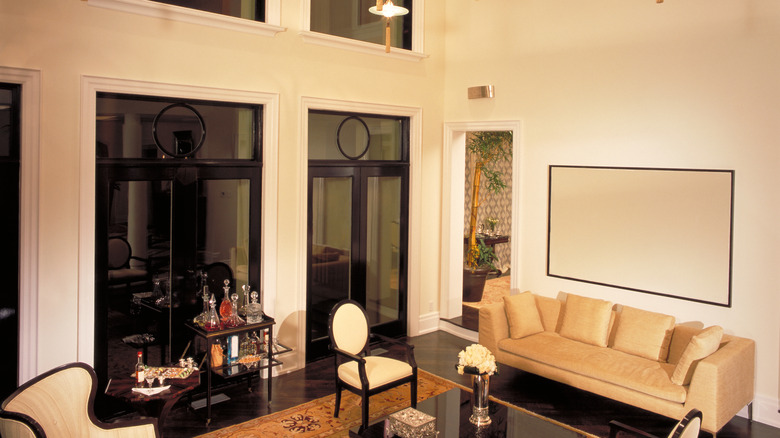How To Use Your Ceilings To Determine The Color Of Your Floors
If you've ever fallen in love with the richness of a deep ebony-colored floor, had it installed, and then felt a sense of unease, it could be that your space suddenly closed up because your ceiling height is on the low to average side. A low to average ceiling height these days is eight feet, and a dark floor in a small room makes it feel uncomfortably smaller. So if you're planning your home now or about to renovate, remember this mantra when shopping for elegant flooring options: the lower the ceiling, the lighter the floor should be. Conversely, a room with a towering ceiling height can become cozier with darker floors.
The average height of a ceiling in a contemporary house is nine feet. Residential codes allow for a seven-foot minimum in habitable basements and laundry rooms, and if you've ever been in a room with a seven-foot ceiling, you know how cramped it feels. Most of us know our home's dimensions, but for the highest level of accuracy, buy or borrow a laser distance measurer and note the various heights throughout your house.
How to leverage your ceiling height for design decisions
If your ceiling is around eight feet, or you're a basketball player and everything feels like a toy, then choosing a lighter stain or wood color (think white-washed wood or a light natural oak) will give the impression your ceiling is a good half foot taller than it is. Of course, you can also use the same principle in reverse. If you have an expansive ceiling and want to create a feeling of more intimacy, opt for a rich, brunette stain or darker tiles on the floor. This will give the impression of making the ceiling a half foot shorter than in reality. There are additional factors to consider when selecting the right floor color, like the amount of sunlight and traffic the room gets.
Here's another pro tip that works hand-in-hand with your ceiling height. When choosing a floor color, remember to take undertones into account. Just as your skin can have a warm or cool undertone, so does the color you paint your walls and the type of light your room receives. If you have a soaring ceiling and decide on a darker stain for a sophisticated look that creates the optical illusion of being slightly smaller, consider whether it should be a warm brown or an ashy cool color. If you paint the color of the walls with warm undertones, your floor should also reflect that warmth.

